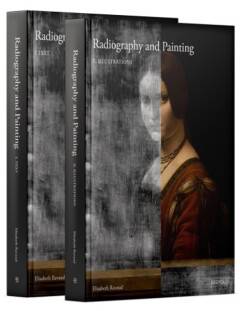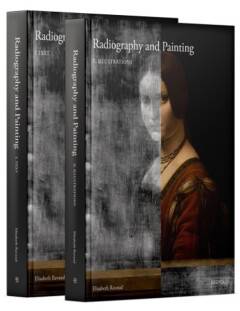
- Retrait gratuit dans votre magasin Club
- 7.000.000 titres dans notre catalogue
- Payer en toute sécurité
- Toujours un magasin près de chez vous
- Retrait gratuit dans votre magasin Club
- 7.000.0000 titres dans notre catalogue
- Payer en toute sécurité
- Toujours un magasin près de chez vous
Radiography and Painting
Elisabeth Ravaud, Marie Lionnet - de Loitiere, Astrid Roche
Livre relié | Anglais
212,00 €
+ 424 points
Description
Radiography is a technique that has been employed in the study of paintings for more than a century. The history of this method of analysis indicates that its development has been modest since the 1960s, as its use has been limited to reductive approaches that take into account no more than the immediately intelligible signs. By systematically considering the physical mechanisms involved in the creation of an image, this volume seeks to demonstrate that we can access new fields of radiological analysis by identifying two categories of 'signs': those that may be obvious but whose meaning is misleading, and those which are not immediately comprehensible. This study has been primarily based on a thorough and essential reviewing of current literature concerning the materials and processes used for the making of paintings. The semiological analysis is based on the understanding of the physical phenomena occurring in the formation of the image, and on correlations between the radiographic images of a painting and the information stemming from its observation, other scientific results, and the restoration reports. Furthermore, a number of experiments were conducted to consolidate certain assumptions regarding image-formation mechanisms. Ultimately, this book hopes to show how data resulting from radiographic analysis can be seen and set in a broader context of information on a specific work or a group of works, in order to enrich our knowledge of art history, history of technology, and conservation as well as restoration. Elisabeth Ravaud is a doctor of medicine, specialised in radiology and scientific imaging and has defended a PhD in Art history. She has been working at the charge of studies and research on easel paintings. She works more particularly on the contribution of scientific imaging to the knowledge and conservation of European easel paintings from the 11th to the early 20th century. Her skills in all techniques or analysis used to study paintings, in xylology, in art history, in history of painting techniques and conservation, allow her a multi and interdisciplinary approach that is particularly valuable in the scientific expertise of easel paintings. She has studied the paintings of numerous artists including Giotto, Leonardo da Vinci, Jean Cousin, Nicolas Poussin, Georges de La Tour, Vincent Van Gogh... Elisabeth Ravaud also coordinated the ICOM-CC Painting Group from 2014 to 2020. The 'Centre de Recherche et de Restauration des Musees de France' (C2RMF) The C2RMF is a Department with national competence of the Ministry of Culture. It has two main missions: scientific research, centred on the knowledge of artworks from French museums in particular their original materials, and conservation/restoration of these works, carried out in its conservation studios in Paris and Versailles or by scientific support on site. Its particularity is to bring together in the same place, around the works, the combined views and skills of art historians, physicists, chemists, curators, archaeologists, restorers, photographers, documentalists, administrators and technicians. The C2RMF is aimed at the 1220 labelled "museums of France". It benefits from the support of the Ministry of Research, thanks to collaborations with the National Centre for Scientific Research (CNRS), as well as from the European Community through transnational projects.
Spécifications
Parties prenantes
- Auteur(s) :
- Editeur:
Contenu
- Nombre de pages :
- 585
- Langue:
- Anglais
Caractéristiques
- EAN:
- 9782503554549
- Date de parution :
- 30-11-23
- Format:
- Livre relié
- Format numérique:
- Genaaid
- Poids :
- 1079 g

Les avis
Nous publions uniquement les avis qui respectent les conditions requises. Consultez nos conditions pour les avis.






